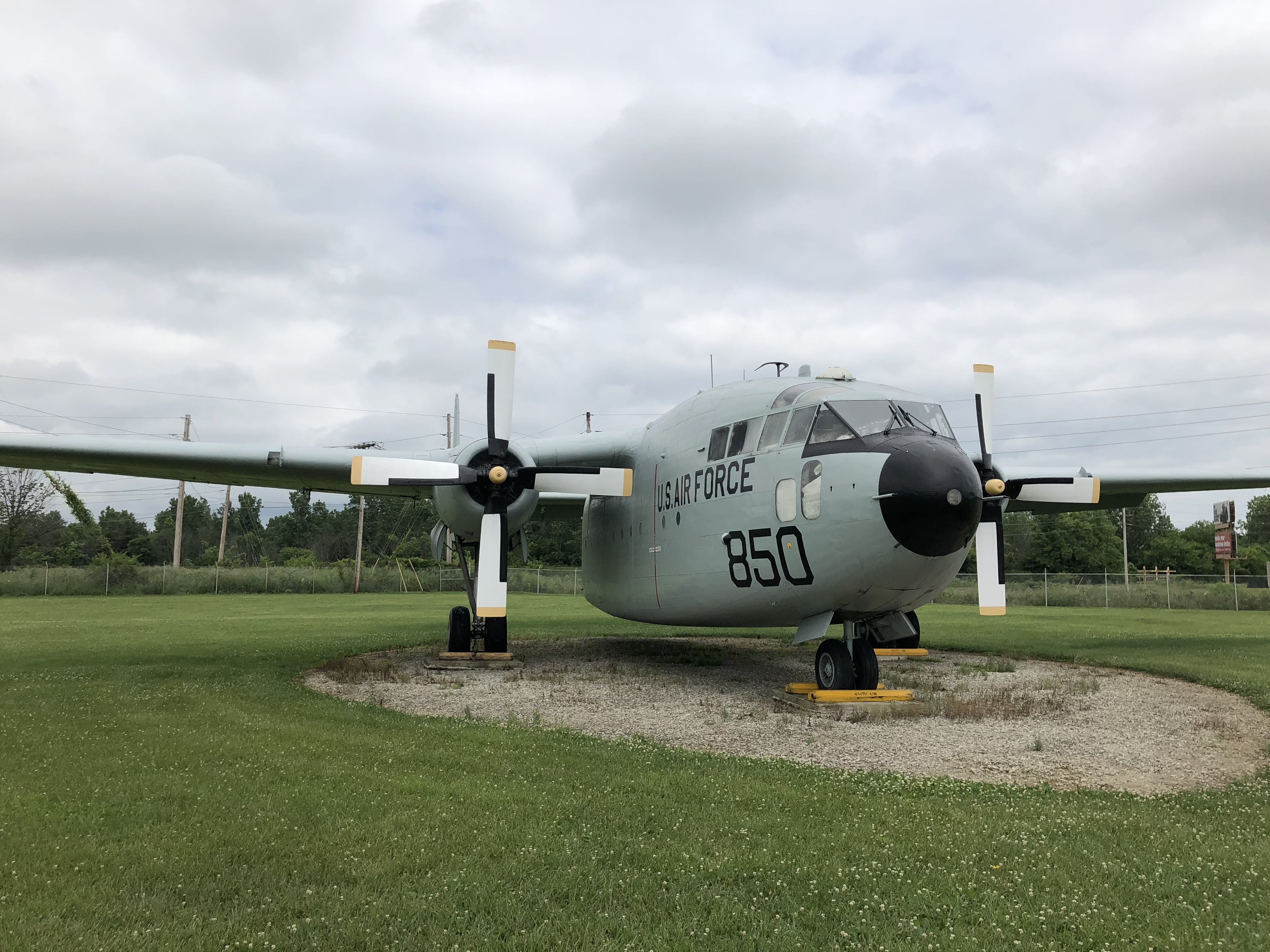FAIRCHILD C-119G FLYING BOXCAR

The C-119, developed from the WW II Fairchild C-82, was designed to carry cargo, personnel, litter patients, and mechanized equipment, and to drop cargo and troops by parachute.
The first C-119 made its initial flight in November 1947 and by the time production ceased in 1955, more than 1,100 C-119s had been built. The USAF used the airplane extensively during the Korean Conflict and many were supplied to the U.S. Navy and Marine Corps and to the Air Forces of Canada, Belgium, Italy, and India.
In South Vietnam, the airplane once again entered combat, this time in a ground support role as AC-119 “gunships” mounting side-firing weapons capable of firing up to 6,000 rounds per minute per gun. The C-119 was also used in the Korean War.
The C-119 was used by the USAF Thunderbirds as a support aircraft from 1954-1959.
The plane could carry 30,000 pounds of cargo or 62 fully equipped paratroopers. Clamshell doors at the rear of the plane could be opened for quick loading and unloading of cargo, which could include Jeeps, trucks, and artillery.
The C-119 was also flown by the 434th Air Refueling Wing as film recovery aircraft for a film from early spy satellites.
| SPECIFICATIONS | |
| Span: | 109 ft. 3 1/4 in. |
| Length: | 86 ft. 5 3/4 in. |
| Height: | 26 ft. 7 3/4 in. |
| Weight: | 66,900 lbs. max. |
| Armament: | None |
| Engines: | Two Wright R-3350s of 3,500 hp. ea. |
| Crew: | |
| Cost: | $ 590,000 |
| Tail Number: | 52-5850 |
| Years in Service: | 1947-1972 |
| PERFORMANCE | |
| Maximum Speed: | 290 mph. |
| Cruising Speed: | 200 mph. |
| Range: | 2,000 miles |
| Service Ceiling: | 30,000 feet |